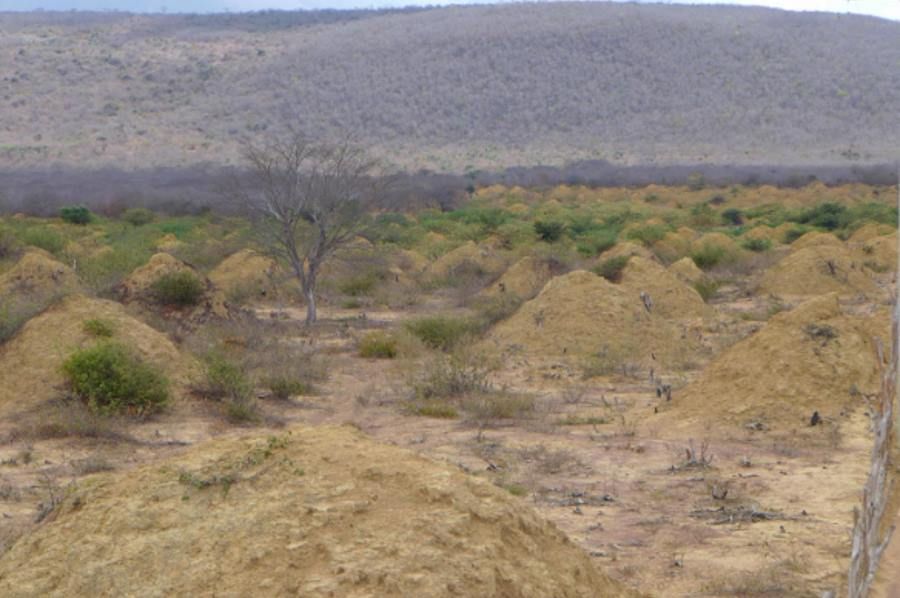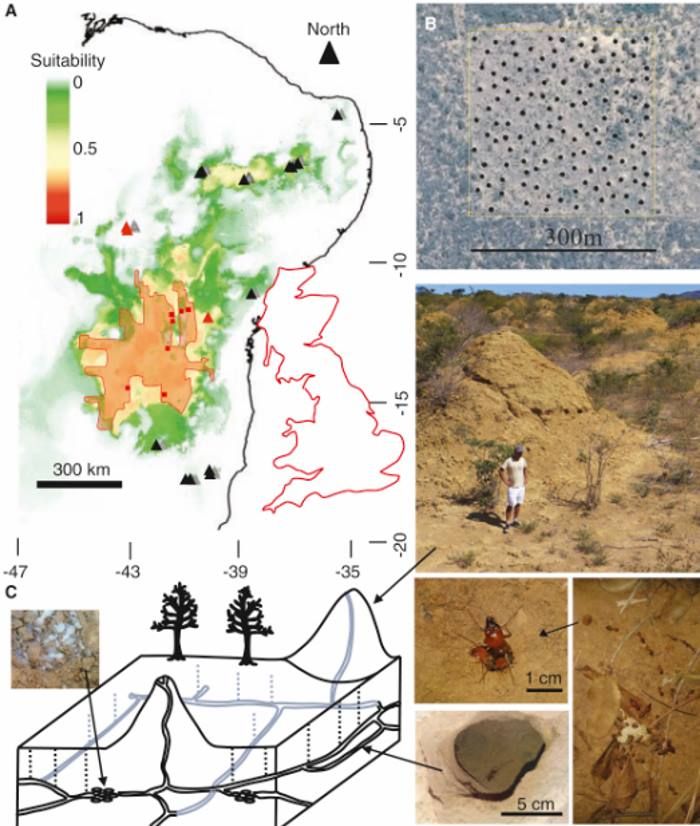
Termite mounds from 4,000 years ago. years, which cover an area the size of the United Kingdom
The mounds were largely invisible through the forest there. They were noticed only when part of the forest, whichory was located on their land, was cut down for pasture and agricultural land. Of course, locals have known about them for a long time, and the mounds are called by them „murundus”.
According to researchers, these mounds are not termite nestsow. Are rather heaps of wasteoIn the resulting networks of interconnected tunnels – the slow and systematic excavation of material from beneath the earth’s surface to get at the food.
The results of the scientists’ researchow from the University of Salford in the UK and the Universidade Estadual de Feira de Santana in Brazil were published in the pages of „Current Biology”.
– This is apparently the world’s largest proba bioengineering of a single insect speciesow, but the most exciting thing is that these mounds are very old – said Roy Funch of the Universidade Estadual de Feira de Santana.
This proce has been going on for at least four thousand years. Prosoil samples collected from the interiors of 11 mounds ofoin and subjected to dating indicated that the mounds were laid between 690 and 3820 years ago. This makes them as old as the world’s oldest known termite moundsoin Africa.
Termite activityow over thousands of years resulted in the excavation of huge amounts of soil, ktora has been deposited in about 200 million mounds ofow. The mounds are cone-shaped and each is between 2 and 4 meters highow and a diameter of about 9 metersow.

– These mounds were formed by a single species of termiteow, whichory has dug a huge network of tunnels to allow itself access to food – dead leaves. This allows them to feed safely directly from the „dna of the forest” – said Stephen Martin of the University of Salford in the UK. – The amount of soil excavated is more than 10 kilometersocubic meters, which is equivalent to 4,000. of the great pyramids at Giza and represents one of the largest structures built by a single insect speciesow – added.
The origins of many terrestrial structures built by insects, are often for scientistscow wrofusoin, because the species, whichory built them has already disappeared from the face of the Earth. But the mounds in Brazil, or rather the soil wokoł them, is still inhabited by termites. There lives a species of Syntermes dirus and he is responsible for creating the mound ofow.
The area in which theohe earth’s cones occupy a total of 230,000. kilometerow square. This has been demonstrated by aerial surveys and satellite imagery. Although the mounds are well hidden from human sight, those who know where to look can spot them even thanks to Google Earth.
– It is amazing to find a completely unknown biological marvel of this size and age in this day and age, whichory still exists, and its inhabitants are still present – acknowledged Martin.
Scientists say many questions still remain about the moundsow, as well as species, whichory built them. For example, no one knows how these termite coloniesow are physically built. It also never found krolowa of this species.


